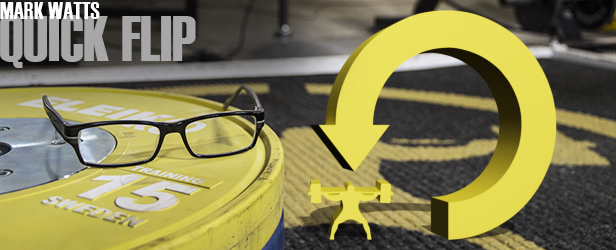
What is a Quick Flip?
- Taken directly from elitefts™ Training Logs or Q&As
- Opinionated
- Unedited
How We Adapted and What I Would Still Do
Olympic Lifts
Day 1:
- Teach Power Position – Hands on knees, shoulder blades in your back pockets
- 1 Arm DB Snatch – Jump & Punch
Day 2:
- Kettlebell Swing – Hit yourself in the nuts and get out of the way
Day 3:
- Barbell Snatch – Jump and punch
Day 4:
- 4 position Barbell Hang Clean – Pause at pocket, power, catch and recover.
Squat
Day 1:
- Teach the bodyweight squat (hands holding the steering wheel) during warmups with static holds at the bottom. Emphasize pushing the hips back, shoulder blades in the back pocket and being able to push your toes up through your shoes at the bottom of the squat.
- DB Goblet Squat – This is the type of movement that is the most easily done because of where and how the weight is held. Distributing the weight forward always help achieve depth. Can even do this facing the wall.
Day 2:
- Barbell Front Squat - catch position, using straps, or hands free.
- The only variation I would not allow is the crossed arms bodybuilding version. holding your arms identical to the shoulder impingement test doesn't make sense to me.
Day 3:
- Barbell Box Squat – below parallel, absorb the box with your butt, push your feet down, drive the head up and knees out.
Day 4:
- Barbell Back Squat (I know it's just called a squat, I got it). Some of our athletes will not be allowed to do this version.
RDL
Day 1:
- Plate Batwing RDL with back close to wall and trying to touch with butt.
Day 2:
- Single Leg (with plate, then DB in opposite hand)
Day 3:
- Barbell RDL
What we found was we were able to reinforce good technique and establish universal coaching cues and buzzwords while still getting some much valued volume and skill acquisition of those particular lift variations.
Next post I will talk about quick fixes for Olympic lifts for athletes.








